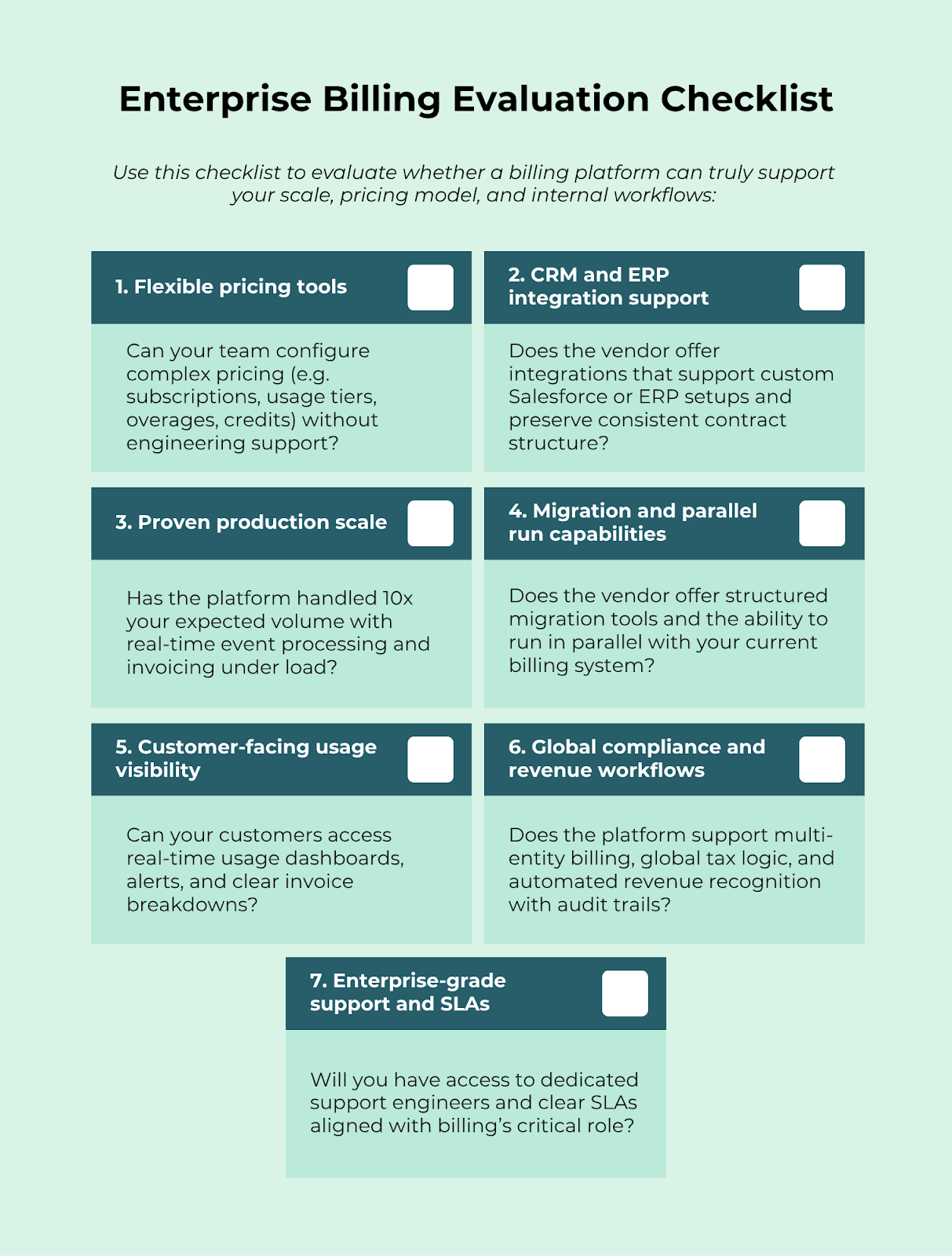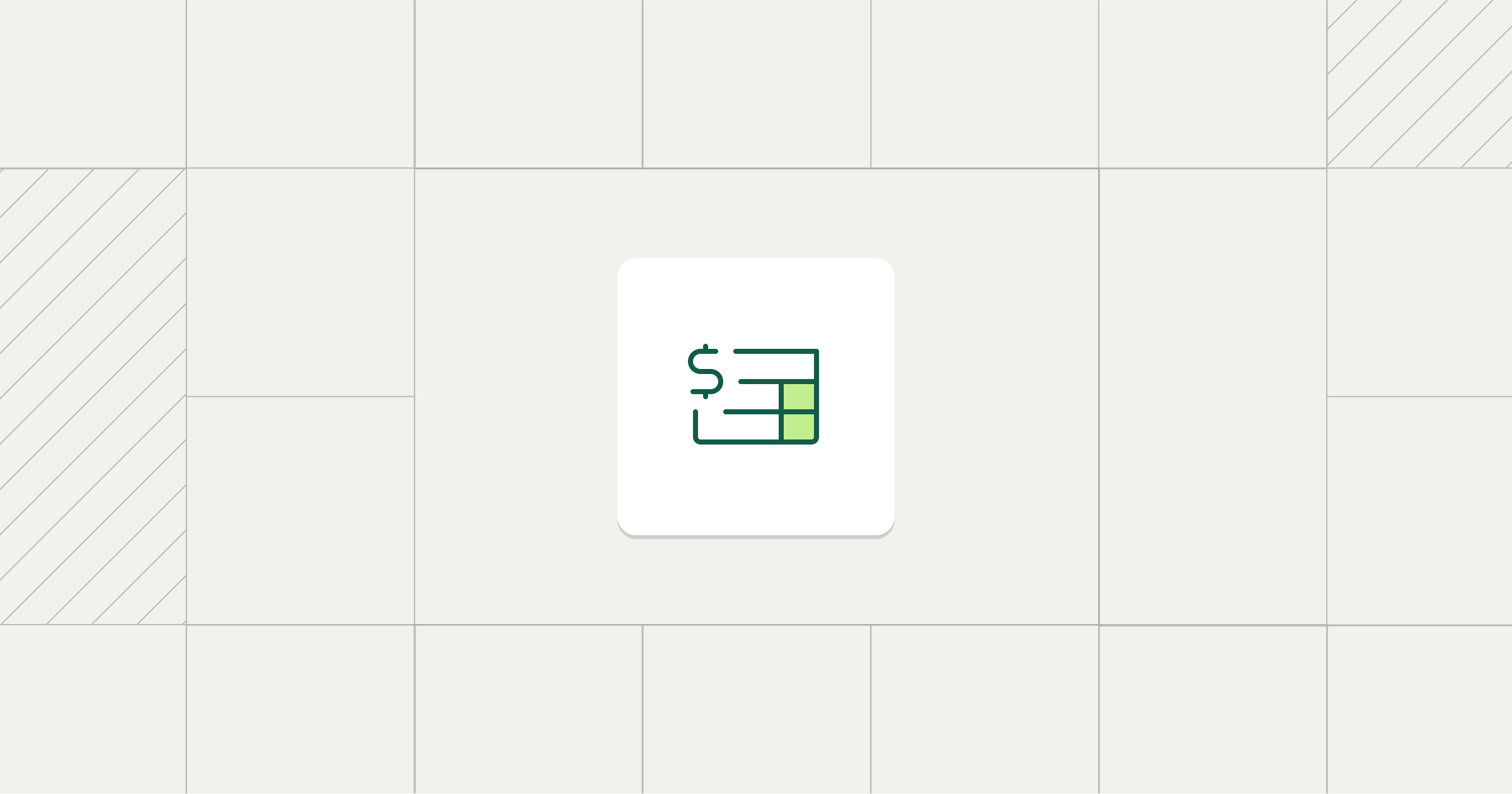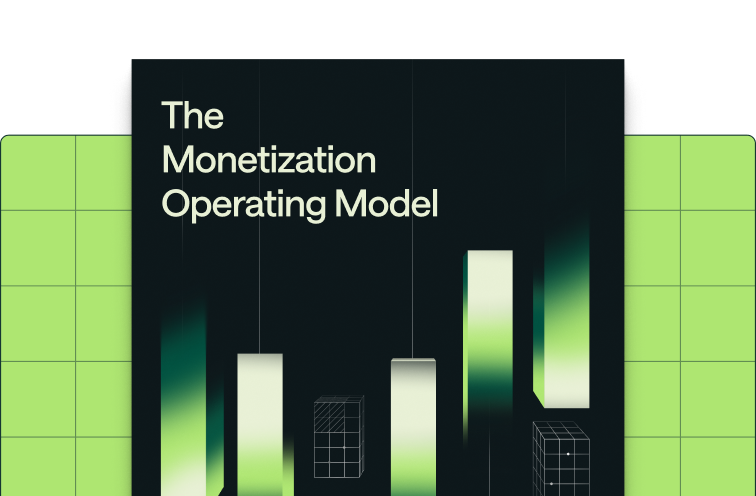Share
Enterprise billing is under pressure. As AI changes how software delivers value, companies have to quickly to modernize their billing systems or risk falling behind.
Software used to deliver value through access. Enterprises sold licenses or subscriptions and billed accordingly. But AI has started shifting the value to outcomes. This means customers use your product in different ways, at different volumes, and expect pricing to match what they get out of it.
Legacy billing systems were designed only to support access-based subscriptions and can't adapt to the shift toward usage and outcome-based pricing. These systems create operational bottlenecks, delaying launches, confusing customers, and causing revenue leakage through manual workarounds.
[CTA: Get access to the whitepaper to learn more about Value Era and how you can adapt.]
This guide gives finance leaders, engineering managers, and product teams a practical framework for picking modern billing platforms.
What is enterprise-grade billing?
Enterprise-grade billing is the infrastructure that powers complex pricing, massive data volumes, and high-stakes revenue at scale. It’s what supports companies like OpenAI, Databricks, and Confluent as they serve global customers with variable usage and custom contracts.
These systems process tens of thousands of events per second, generate accurate invoices in real time, and support hybrid pricing models with subscriptions, usage tiers, minimums, overages, and multi-year commitments. All in one contract.
Enterprise billing also connects every internal team to the same source of truth:
- Finance closes books faster with automated reporting and reconciliation.
- Product launches new pricing models without engineering bottlenecks.
- Sales ops supports everything from self-serve SKUs to enterprise custom terms.
- Engineering runs mission-critical systems without firefighting billing issues.
This level of billing requires more than a subscription plugin or usage add-on. It requires architecture built from the ground up for volume, flexibility, and precision.
{{widget-monetization-whitepaper}}Why legacy enterprise billing solutions fall short
Legacy billing systems weren’t built for modern, usage-based pricing models.
Most were designed around static, seat-based subscriptions, where usage didn’t vary, contracts were simple, and scale was predictable. That architecture breaks quickly in usage-based and AI-native environments.
The first breakdown is speed. When OpenAI relied on its internal billing tools, pricing changes took six to eight weeks to roll out. Now, using APIs and real-time infrastructure, those same changes happen in about a minute. And can be scheduled in advance.
That level of speed becomes a competitive edge. If your competitors can move that fast, waiting weeks can put you behind before you even launch.
Legacy systems also demand more people to manage basic operations. OpenAI runs billions in revenue with a billing team of about one and a half engineers. At a similar scale, Dropbox needed more than 50. Legacy tooling creates internal drag—engineers maintaining brittle integrations, finance teams stitching together reports, and operators manually resolving errors that should never happen in the first place.
These systems also can’t handle real-time usage. When data volumes spike, companies are forced to fall back on CSV exports, one-off scripts, and manual reconciliation. That makes errors inevitable. Underbilling eats into revenue. Overbilling damages customer trust. Every exception adds operational risk.
As pricing complexity grows, the cracks get deeper. Enterprise deals often involve minimums, overages, custom revenue schedules, and nonstandard contract terms, all within a single agreement.
Most legacy billing tools aren’t built to support this natively, so companies bolt on logic wherever they can. The result is fragile connections across product, finance, and ops. One contract tweak requires a lot of manual spreadsheet work.
Even customer experience suffers. When usage isn’t visible until the invoice arrives, customers get blindsided by charges they didn’t anticipate. That surprise erodes trust and slows down renewals. Real-time dashboards and usage alerts flip the script, giving customers visibility into what they’re using as it happens.
Audits and IPO-readiness become another obstacle. Legacy tools often can’t produce a clean record from raw events to recognized revenue. That’s a problem when auditors want traceability, not estimates. Without event-level logs and automated revenue recognition, finance teams face delays, workarounds, and missed close deadlines.
All that’s to say: Legacy systems weren’t built for this environment. And no amount of patching changes that.
How to choose an enterprise billing solution (+ a checklist)
The right billing platform should handle growth, reduce manual work, and let teams across finance, product, and engineering do their jobs.
Here’s a quick checklist to guide your evaluation:

Use the following principles to guide your evaluation and avoid expensive implementation mistakes.
Test pricing flexibility
Modern billing platforms should give non-technical teams point-and-click or API-based tools to build complex pricing models without engineering help. The system needs to handle enterprise contract terms like minimums, overages, credits, and custom pricing rules.
Ask your vendor the following:
- How long does it take to build your most complex enterprise deal?
- Can you mix subscriptions, usage tiers, and outcome-based pricing in one contract?
For example, Salad replaced its manual billing process with Metronome in just two weeks, automating complex SKUs, usage tiers, and overages across both cloud and marketplace sales.
This eliminated the need for engineering involvement in billing updates and gave teams the freedom to evolve pricing without custom code.
A flexible pricing engine saves time across every department and helps you adapt as your product evolves.
Check ERP and CRM connections
Everyone wants a plug-and-play integration with customer relationship management (CRM) and enterprise resource planning (ERP) tools. But here's the truth: no two companies have identical ERP and CRM setups. Simple connector promises usually fail when they hit real enterprise system complexity.
Ask your vendor the following:
- Do you have playbooks and examples of how you handle custom integrations?
- Do you keep the same data structure so contracts can flow through CRM, CPQ, and ERP without translation?
- How do you handle our specific ERP version and custom fields?
For example, Cribl’s teams use Metronome to move billing data wherever it needs to go—into their data warehouse, CRM, or reporting tools.
As Cribl’s VP of Business Operations put it: “Metronome does both. Our developers can easily work with the APIs… Our business users work within the Metronome UI to build plans and pull data into our data warehouse, our CRM, and reporting tools—wherever it needs to go.”
Seamless integration keeps your quote-to-cash process intact and reduces internal workarounds.
Validate ccale
Enterprise billing needs proven performance at the volumes you're planning. Platforms must show successful deployments with real-time event processing and reliable invoicing under peak loads.
Ask your vendor the following:
- What scale have you proven in production?
- Can you show deployments handling 10x our current volume?
Get real examples, not vague promises. Platforms that need custom infrastructure work for your scale are red flags.
For example, OpenAI uses Metronome to support massive scale, including millions of customers, real-time usage metering, and rapid product launches.
Their billing system processes high volumes of usage data and powers self-serve, and enterprise motions—all without infrastructure rewrites or operational slowdowns.
If the system can’t handle your future volume today, it won’t grow with you.
Look at migration tools
Moving off legacy billing systems needs structured onboarding, data import tools, and parallel run capabilities that reduce risk. You can't afford billing failures during transitions.
Ask your vendor the following:
- What specific tools do you provide for migration?
- Can the platform run alongside existing systems during transition?
With Metronome, they transitioned complex enterprise contracts without relying on manual finance work or custom engineering.
Manual processes or vague timeline estimates are warning signs. Strong migration support ensures you can switch without revenue disruption or customer pain.
Examine customer-facing features
Usage-based billing needs customer-facing capabilities that traditional subscription systems don't have. Customers need usage dashboards, spend controls, alerts, and clear invoice explanations to feel comfortable with variable pricing.
Ask your vendor the following:
- What visibility do customers have into usage and spend?
- Can customers set budget alerts, usage limits, or automatic notifications?
For example, Starburst uses Metronome’s API to power real-time usage dashboards across both their product and cloud marketplace listings.
As the team shared: “One of the nicest things I hear from customers is that in addition to having real-time usage data in our product, we also have real-time usage displayed in their cloud marketplace dashboard, so they have a central place for cost optimization.”
Transparency is essential for usage-based billing success. The better your customer experience, the easier it is to retain and grow accounts.
Verify global and revenue support
Enterprise companies need comprehensive compliance, including global tax engines, multi-entity billing, and revenue recognition workflows that connect with existing financial systems.
Ask your vendor the following:
- How do you handle global operations, tax complexity, and revenue workflows?
- What audit trails do you maintain for financial reporting?
For example, QuestDB uses Metronome to connect its product directly to its revenue workflows.
It’s now easier for the team to programmatically grant and track credits for customers, while native integrations with Stripe, AWS Marketplace, and Anrok enable seamless invoice processing and streamlined accounting operations.
Platforms that treat global operations as add-ons rather than core features create compliance risk. So look for platforms that treat compliance as infrastructure, instead of an afterthought.
Evaluate support and SLAs
Billing systems handle your money, so they need reliable, responsive support when things go wrong. Enterprise Service Level Agreements (SLAs) must scale with business growth and match how critical billing is to operations.
Ask your vendor the following:
- What support do you offer enterprise customers?
- Is there a dedicated support team that learns your specific use case, rather than a shared support queue?
For example, as OpenAI’s team scaled to tens of millions of users, Metronome’s dedicated support team stayed in lock step with both business and engineering stakeholders, ensuring billing infrastructure kept pace with rapid product launches and evolving customer needs.
Shared support queues don't work for enterprise billing operations. A responsive support model helps your team move quickly and keeps revenue flowing when issues arise.
Enterprise billing solution categories compared
The enterprise billing market is splitting apart as usage-based models expose platform limitations, creating migration traps that make vendor choice a long-term strategic decision.
Understanding these categories helps companies avoid expensive platform switches as they scale.
Legacy subscription platforms
Legacy subscription billing platforms were built for a different era, one where seat-based pricing and predictable contract terms dominated.
Here’s what traditional billing models are good at, where they fall short, and when they stop working:
- Strengths: Mature invoicing, existing enterprise customer base, and comprehensive subscription management features make these familiar choices for traditional subscription businesses. They handle complex contract terms, dunning management, and enterprise reporting that newer platforms may lack.
- Migration trap: Usage capabilities are bolted onto subscription foundations, creating technical constraints that compound over time. The core data models weren't designed for high-volume usage events or real-time processing, leading to performance problems and operational workarounds as usage complexity increases.
- When they work: Best for traditional B2B SaaS businesses where usage is secondary to core subscription value.
- When they break: High-volume usage scenarios, comprehensive support for usage-based pricing models, AI-driven consumption models, or when real-time customer visibility becomes critical.
While these platforms still work well for traditional SaaS, they often struggle under modern usage patterns—especially when AI, volume, and real-time demands reshape how value is delivered and charged for.
Payment-centric billing
Payment-centric platforms focus on getting you paid fast, but billing complexity often takes a back seat.
Here’s where tools like payment-centric billing tools shine, and where they start to fall short:
- Strengths: Quick setup, seamless payment processing integration, and developer-friendly APIs provide excellent starting points for growing companies. These platforms excel at payment orchestration, global payment methods, and basic subscription management.
- Scaling limitation: Companies outgrow these platforms when business models need sophisticated pricing logic, enterprise compliance features, or complex financial workflows. The payment-first architecture prioritizes transaction processing over billing sophistication.
- When they work: Early-stage companies with straightforward pricing models, mostly self-serve customers, and relatively simple billing needs. Excellent for businesses prioritizing speed to market over long-term billing sophistication.
- When they break: Enterprise sales motions with custom contracts, complex usage-based models requiring granular metering, or when billing becomes central to customer experience rather than background infrastructure.
These tools are ideal for speed and simplicity early on, but most teams hit limits when billing moves beyond transactions and becomes part of the product experience itself.
Metering-first tools
Metering-first platforms prioritize usage tracking above all else. They’re built for engineering teams that need deep event-level visibility. But billing operations often require much more.
Here’s how metering-first platforms stack up when it comes to usage tracking, billing complexity, and long-term operational demands:
- Strengths: Event ingestion and usage tracking capabilities designed for high-volume data collection. These platforms provide granular insights into customer usage patterns and excel at handling complex metering scenarios with sophisticated aggregation logic.
- Technical debt challenge: Limited billing and financial workflow capabilities require integration with multiple additional systems for complete billing operations. This approach creates operational complexity as companies need separate solutions for invoicing, revenue recognition, customer-facing features, and financial reporting.
- When they work: Companies with sophisticated metering requirements that can invest in building comprehensive billing workflows around the metering core. Best for businesses where usage tracking complexity exceeds billing workflow needs.
- When they break: When companies need unified billing operations, customer-facing billing features, or integrated financial workflows. The multi-system approach becomes maintenance overhead that pulls engineering resources from product development.
These tools deliver on metering power, but without built-in billing workflows, companies often face growing complexity and technical debt as billing becomes a cross-functional responsibility.
Modern usage-based platforms
Modern usage-based platforms are designed from the ground up to support dynamic pricing models, real-time metering, and enterprise-grade financial operations. These aren’t retrofitted subscription tools—they’re billing systems built for how modern software actually works.
Here’s how they approach billing complexity, customer segmentation, and long-term scalability:
- Strategic advantage: Specialized architecture for usage-based models with enterprise scale and comprehensive financial workflows. These platforms avoid technical compromises by designing specifically for usage complexity from initial development rather than retrofitting existing systems.
- Unified approach: Handle both self-serve standardized plans and complex enterprise contracts within single systems, eliminating operational complexity from managing separate billing infrastructure for different customer segments while maintaining flexibility for future business model evolution.
- When they excel: Companies prioritizing long-term billing scalability, enterprise sales motions requiring contract flexibility, or businesses where billing significantly impacts customer experience. Best for companies treating billing as strategic infrastructure rather than operational overhead.
- Investment consideration: Lower total cost of ownership as companies scale. These platforms grow with business model evolution rather than requiring expensive migrations as usage becomes central to the business.
Platforms like Metronome fall into this category—giving product, finance, and engineering teams the infrastructure they need to launch fast, price flexibly, and scale without rebuilding billing from scratch.
Why Metronome outperforms other enterprise solutions
Metronome's five core advantages represent architectural decisions that enable enterprise success:
1. Specialized usage architecture
Metronome processes tens of thousands of billing events per second with transactional guarantees. The platform was designed specifically for usage-based pricing from day one, avoiding the technical compromises that limit retrofitted subscription systems.
This means real-time processing that handles massive scale without performance problems, letting companies grow without hitting billing infrastructure limits.
2. API-First pricing flexibility
Teams can deploy pricing changes instantly that previously took at least six to eight weeks. This speed enables rapid response to market feedback, competitive dynamics, and customer requests without engineering help or contract renegotiations. Product and business teams gain independent pricing control that matches the speed of modern product development.
3. Unified workflow support
The platform handles both self-serve standardized plans and complex enterprise contracts within a single system. This eliminates the operational complexity and technical debt of managing separate billing systems for different customer segments.
Companies can scale from startup to enterprise without platform migrations, supporting consistent customer experiences across all sales channels.
4. Real-Time customer visibility
Usage dashboards and spend controls prevent bill shock while enabling proactive consumption management. Customers gain transparency into their usage patterns and costs, building trust while reducing support burden from billing-related questions. This visibility becomes a competitive advantage, helping customers optimize their consumption and budget effectively.
5. Proven enterprise scale
Metronome processes billions in revenue for 150M+ users with 8x growth in 2024. The operational efficiency helps companies to achieve enterprise-scale billing operations with minimal engineering resources, while competitors require extensive billing engineering teams. This proven performance provides confidence for companies planning aggressive growth trajectories.
The complete guide to modern monetization
Enterprise billing evaluation is the first step toward comprehensive monetization transformation for the AI economy. Modern billing infrastructure supports business model evolution rather than constraining it.
Companies using purpose-built platforms respond to market opportunities, experiment with pricing strategies, and scale operations without technical limitations. The transformation extends beyond billing mechanics into strategic monetization, including customer value alignment and operational excellence.
This guide covers enterprise billing evaluation, but the transformation goes deeper. Modern monetization requires systematic approaches to pricing strategy, customer value alignment, and operational excellence for usage-based and AI-driven business models.
{{widget-monetization-whitepaper}}









.avif)
